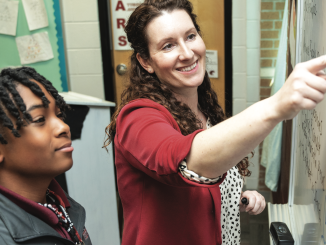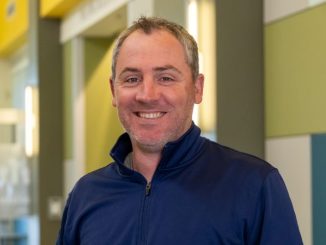
Two St. Charles Parish Sheriff’s Office employees will grace the small screen this week when A&E’s new series, First Blood, airs an episode diving into the case of serial killer Ronald Joseph Dominique.
Capt. Renee Kinler, who presides over the SCPSO’s special services division, and Retired Major Sam Zinna of the SCPSO took part in the project. Former Chief of Kenner PD Mike Glaser was also featured in the episode.
First Blood examines some of America’s most notorious serial killers and gives a unique perspective on the psychologically complex killers. Each episode explores the pivotal moments in the killers’ lives that led to them to committing horrific crimes.
This week’s episode on Dominique, known as the Bayou Strangler, air will air tomorrow, Aug. 30, at 11 a.m. on A&E. It will also be available on various streaming platforms. Dominique is serial killer and rapist who murdered at least 23 men and boys in Louisiana between 1997 and 2006. Dominique’s victims tended to be teenagers and men aged between 16 and 46. Many, but not all, were homosexual and African American. Dominique would often meet these men during walks or drives in his pickup truck, as well as in gay bars, luring them with offers of alcohol, drugs, housing, or group sex with his supposed girlfriend.
On September 23, 2008, Dominique was found guilty and sentenced to several terms of life imprisonment without parole for his crimes. Following his conviction, the FBI reported that Dominique’s case was the most significant serial homicide case in the country over the past 20 years in terms of victim count and duration.
Dominque was tied to several crimes in St. Charles Parish. His first confirmed victim was 19-year-old David Mitchell, who was picked up while hitchhiking alone from his grandmother’s house. His body was found on July 14, 1997, in a ditch along a highway, near a wooded area in St. Charles Parish.
Dominique’s next two murders took place in the St. Charles Parish. The first was in December 1997, when he strangled 20-year-old Gary Pierre. The second killing occurred in July 1998, when he killed 38-year-old Larry Ranson.
In 2005 Dominique murdered 28-year-old Alonzo Hogan in St. Charles Parish. Several of his other victims were from St. Charles Parish.
Dominique’s case was unique, Zinna said. Because of the socioeconomic status of many the victims, as well as the fact that many of them were homosexuals like Dominique, there were assumptions made by many regarding the investigation.
“You had the belief among some that law enforcement didn’t care,” Zinna said. “That’s the hardest thing to deal with. Everyone was doing everything they could. We had no information … no evidence. It went on for nine years.”
Zinna said law enforcement officials from all of the impacted sheriff’s offices worked together early on in the crimes to track the cases and the similarities of the perpetrator.
“We just had a real entangled web there that we were trying to work through,” he said. “But I assure you it’s not because any of us who had these cases didn’t care. It was evident there was some sort of pattern there and we were trying to make a concerted effort in trying to locate the perpetrator. We were sure it was the same individual. It was a major effort on everyone’s part, unfortunately it just took a long time.”
Zinna said the grueling case was slowed due to sluggish DNA technology at the time, but that opportunities to dive into the case like the one presented by participating in the A&E show are important so that law enforcement representatives can show the care and compassion that they do feel for the victims and the victim’s families.
Several hours of recorded interviews were conducted with Kindler and Zinna on the case. The filming took place at a bed and breakfast in New Orleans and required both professionals to study the case details for hours.
“It’s important to really always take it at the angle of the number of victims and of course their families and always keeping it front and center of what they endured,” Zinna said. “Just like with any other case, sometimes a lot of things get distorted … especially with a serial killer’s case. It was good to participate. It gives you an opportunity to really tell your side of the story and let everyone know the stress that is involved in working those types of cases. You’re in the pressure cooker for a long time.”





Be the first to comment